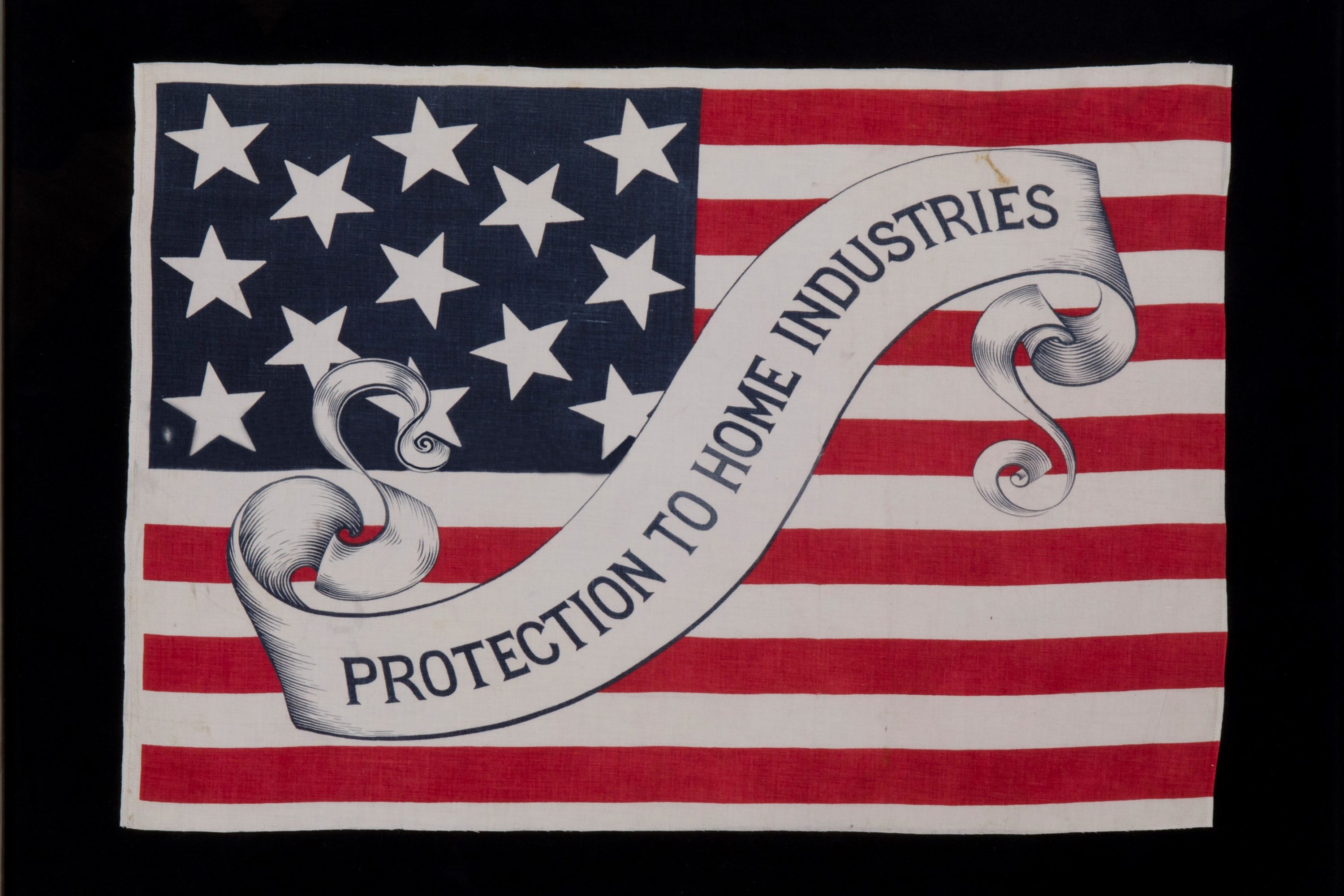The presidential campaign flags from 1815 to 1912 on display at the UConn’s William Benton Museum of Art showcase the names of vying candidates against a multitude of flag designs and messages.
But don’t assume the words are those of the candidate. “And I approve this message,” would not be uttered by any of the politicians featured on the 67 carefully preserved block-printed cotton and silk flags on loan from the Mark and Rosalind Shenkman Collection of American Political Flags and Textiles.
Then, like now, much of the campaign paraphernalia surrounding an election was the product of moneymaking businesses and not sanctioned, carefully crafted wording by the candidates themselves. The messages touched upon general issues with phrases such as “equal taxation,” “good government for the people,” “reduction of surplus,” “civil service reform,” and “protection to home industries.”

“Enterprising businessmen looking to profit from the rallies and election, in general, churned them out,” says Jeff Bridgman, an expert on antique American flags and textiles who curated the exhibit. “Sometimes one company manufactured flags for all the candidates in an election.”
An example of that is the 1860 election, says Bridgman, when the Howard Co. in Philadelphia produced the flags for the four candidates: Abraham Lincoln, Republican; John C. Breckinridge, Southern Democrat; Stephen A. Douglas, Northern Democrat; and John Bell, Constitutional Union.
A flag from the 1860 election is featured among the rare and valuable items that are on display.
Also on view is an official broadside of the Declaration of Independence, printed in Massachusetts on July 20, 1776, before word reached the state government that the New York state delegates had adopted the Declaration. The copy shows New York as abstaining.

The flags collected by Shenkman ’65 (CLAS), ’07 (Honorary) reflect a creative freedom in their designs because they all date before 1912, when the country adopted an official flag design. Because of that, there is an abundance of differing shades of red and blue, star configurations, and proportions of stars to stripes.
“Up until then, you had the liberty to design the flag as you liked,” says Bridgman. “What first triggered my interest in antique American flags was just how different the designs were.”
An executive order by President William H. Taft spelled out the details of the official U.S. flag for the military, details that were broadly adopted over time, says Bridgman. Small changes have been made to the flag since then – the number of stars growing from 48 to 49 and 50, with the additions of Alaska and Hawaii.
Like campaign paraphernalia today, many of the pieces in the Shenkman collection were probably mass-produced, says Bridgman. Yet the few that survived over time became rare and collectable.
Bridgman notes there are many “Holy Grails” in the Benton Museum exhibit. The 1872 flag of Ulysses S. Grant and his running mate Henry Wilson, is one of those. “So little survived from that election,” he says. “They just didn’t make many, for reasons that aren’t clear.”
And to Bridgman, all of them are beautiful: “They really are some of the truest forms of American folk art,” he says.



